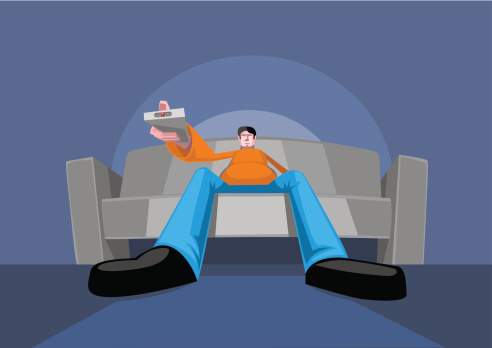 That’s a dumb question, isn’t it? After all, the answer is, “Who doesn’t?” But you probably see little teaser ads like that all the time on the less reputable sites, and you know that it sounds way too good to be true, so you pass it by.
That’s a dumb question, isn’t it? After all, the answer is, “Who doesn’t?” But you probably see little teaser ads like that all the time on the less reputable sites, and you know that it sounds way too good to be true, so you pass it by.
Luckily for you, we’re not kidding. Here is how you do it.
Sit down in your most comfortable chair, grab a cold one, and get the remote out. No matter where you are, there is a ton of content available on cable or your favorite satellite provider. Your TV is jammed packed with sports, movies, reality shows, cooking shows, restaurant reviews, documentaries, home improvement shows (this list could honestly go on forever at this point) and every else you can imagine.
You have more choices than ever when it comes to TV programming. The downside to that is, of course, the arm and leg that so many cable companies want in exchange for all these options. In return for the magic cord to give you the world, it seems like they don’t want anything less than your first-born child.
So what’s the trick? Cut the cord.
Many people are learning how to get around the ridiculous costs of HDTV and specialty channels by “cutting the cord” on cable and satellite. More and more TV aficionados are turning to the Internet to stream content online for their television fix.
Here are a few ways you can stream your favorite show without losing out on quality:
- Google Chromecast Starting at $35.00, Google Chromecast fits into your HDMI port of your TV. Every new television has at least one HDMI port, but older TVs will not, so doublecheck your set before you run out and buy this. Google Chromecast allows you to hook your computer to your television over your wireless network and stream content from any website offering this service. You can also use your smartphone or tablet to connect to Google’s Chomecast.Google Chromecast also connects with Netflix, Hulu Plus, and even YouTube.
- HD Antenna If you like the major broadcast networks, local sports, and news… HD Antenna is the choice for you. It lets you pull the broadcast signals straight out the air for free. This paper-thin solution can mount on anything.The omni-directional antenna will grab signals no matter how it’s positioned. The standard model has a range of about 30 miles. Make sure you check out the distance of the broadcasters before you purchase, so you know what you’ll be able to watch. This website will help: click here.
These are just a couple of the ways you can still get quality TV programming without the expense of cable or satellite. The nice thing about it you can also take them with you when you travel. More and more options become available every year for those who embrace the Internet as the new standard for getting their media fix, so who knows what else you’ll be able to stream this time next year? Only one way to find out for sure – grab the future with both hands and see what’s out there.
Have questions about anything to do with technology? Give your team of IT professionals at {company} a call. We are here to help you take advantage of today’s information technology to improve your business and your life. Call us at {phone} or drop us an email at {email}.



